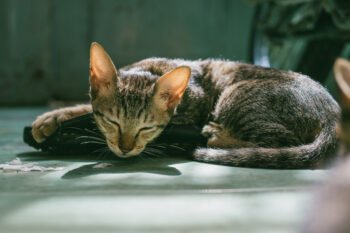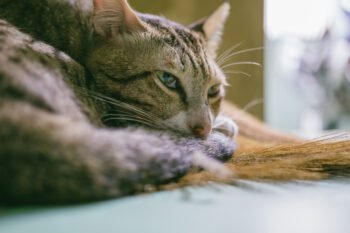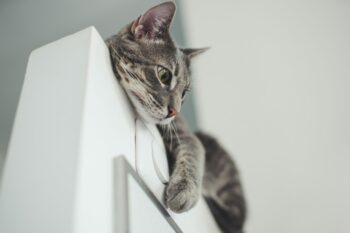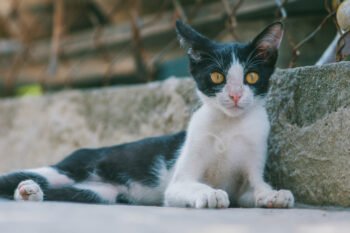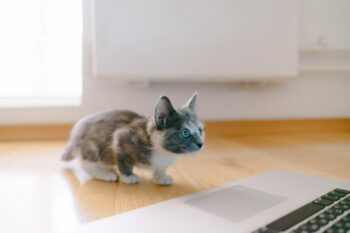The fate of homeless, adult black cats constantly remains in question at shelters. A 2002 study in the Journal of Applied Animal Welfare Science found that black cats were up to two-thirds less likely to be adopted than other cats. Being a homeless cat is hard enough, but the sad truth is that certain types of cats are bypassed by adopting families time and again.
Not Every Cat Is a Kitten
Age may be an even more important issue than color. For those who wish to bring home a new cat, kittens of any color are hard to resist. Their furry faces and playful antics often steal the show at adoption events, while adult cats quietly sit alone in their carriers. “Kittens usually fly out the door because they are so popular,” says San Francisco SPCA spokeswoman Jennifer Lu. “Once cats lose their kitten-ness, it becomes harder to adopt them out.”
Inga Fricke, director of Sheltering and Pet Care Issues at The Humane Society of the United States (HSUS) based in Washington, D.C., adds that “animals with special medical or behavioral needs are more difficult to adopt than puppies and kittens.” Lu explains that cost is often the concern. “If an animal needs a certain medicine that’s expensive, just as a practical issue, some potential owners are unwilling or are unable to take on that cost,” she says, adding that her organization will sometimes issue special medical dispensations covering the additional cost.
Black, Senior Cats Are Often Overlooked
Even if a black adult cat is in perfect health and has a sweet nature, it may still remain in the shelter. One reason is simply that black cats are more common, perhaps because this color is just genetically more dominant among cats. Old superstitions may also be to blame, suggests Bobbie Gambarini, who fosters cats and who recently volunteered for a Black Is Beautiful cat adoption event in California. She thinks some people believe black cats are unlucky, even though in parts of Europe they’re actually believed to bring good luck to their owners.
The biggest reason, however, may have to do with how well the cats photograph. In this social media age, people often surf the Net before visiting shelters. Professional photographers aren’t always available to snap the most flattering shots of scared homeless cats, so some cats disappear into dark backgrounds and poor lighting.
Turning the Tide
Groups across the country are trying to increase the rate of adoptions for all cats, and especially those that need the extra boost. Fricke shares that the HSUS has joined together with Maddie’s Fund and the Ad Council to create the first-ever public advertising campaign to promote adoption, The Shelter Pet Project. Boston-based Black Cat Rescue and other organizations are also building awareness while finding cats homes.
Frequently overlooked cats often make better pets. “Older animals, for example, are beyond the annoying chewing stage, are typically fully trained and are much more ‘What you see is what you get’ than younger animals who have not fully developed their personalities yet,” says Fricke.
Christina Alvarez, director of Hopalong & Second Chance Animal Rescue in Oakland, Calif., adds that such cats also tend to be:
- Trained to use the litter box
- Reserved and well-behaved
- Adapted to home life
- Appreciative of love and care
- Eager to bond with supportive owners
The experts often practice what they preach too. Lu, who adopted three adult pets, advises that anyone who desires a new cat “should go in with an open heart and open eyes. Rather than sticking to predetermined characteristics, make a love connection.”
Fricke agrees: “We would love for people to bear in mind that most pets wind up in shelters through no fault of their own — not because they have problems, but simply because their owners had personal problems, such as they needed to move, had a new baby, etc. They are wonderful, family-ready pets who only need to be given an opportunity to show how wonderful they are.”

